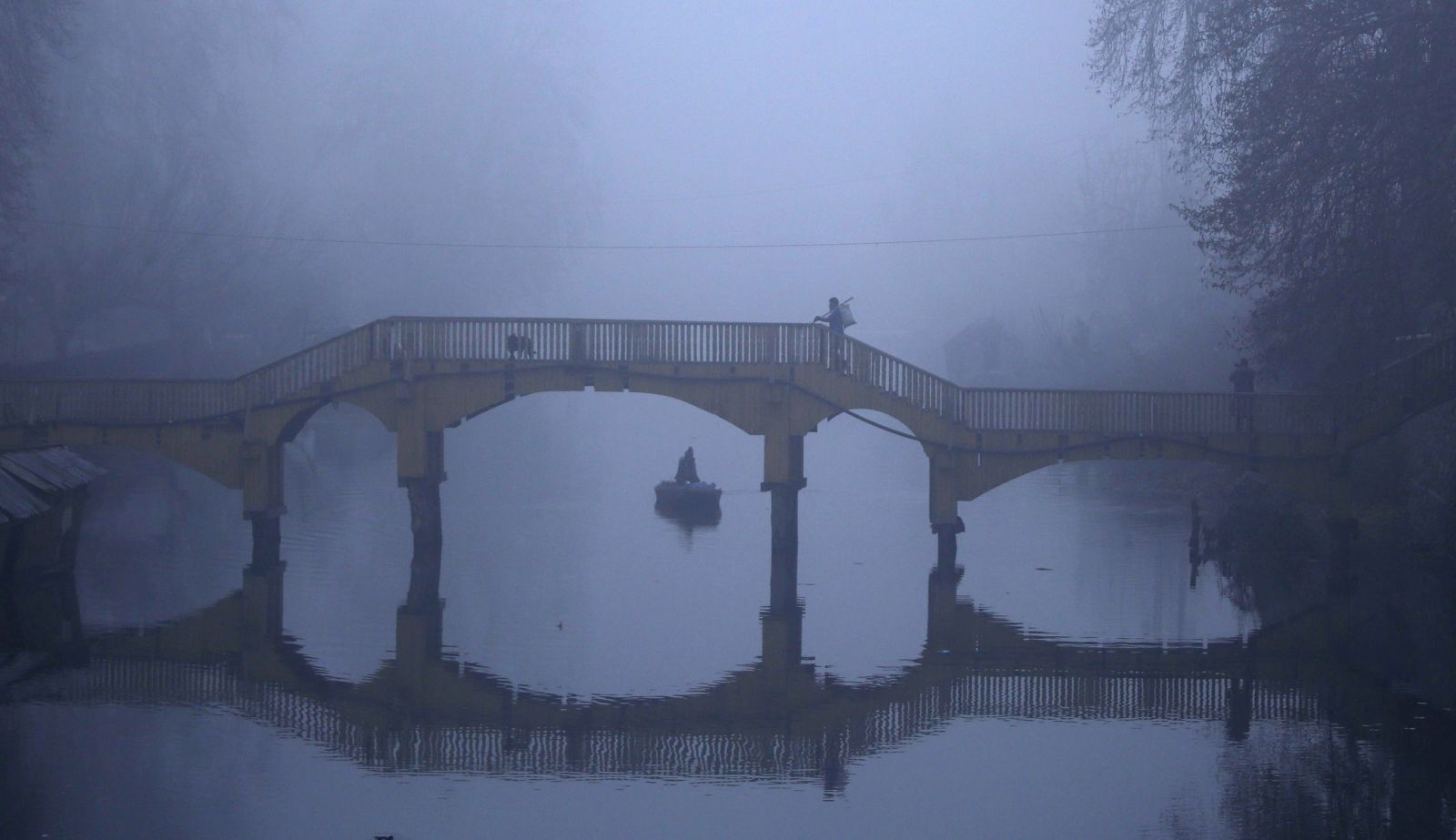International Mother Language Day 2024
By: Dr. Reyaz Ahmad Ganaie
International Mother Language Day is celebrated every year on 21st February. The idea of celebrating mother language was first mooted by Bangladesh at the 1999 UNESCO General Conference. The Day was officially announced by UNESCO (United Nations Educational, Scientific and Cultural Organization) in 1999. The United Nations draft about the day was unanimous and was sponsored and supported by 28 other countries from around the globe but it has been observed in Bangladesh since the mid-1950s.
The day has been celebrated each year since 2000 in order to counter the global problem of universal languages taking a toll on local vernacular languages. Countries have been trying to promote linguistic and cultural diversity around the world. In India, this day is referred to as the Matribhasha Diwas. It is within its mandate for peace that UNESCO works to preserve the differences in cultures and languages that foster tolerance and respect for others.
The International Mother Language Day highlights the importance of everyone’s mother language which makes it even more vital that they are preserved. As per UNESCO data, 40% of the global population does not have an education in a language they speak or understand.
On International Mother Language Day events are organised to promote the hearing of all voices, and activities that display social cohesion and cultural awareness. On 21st February every year educational institutes often organise cultural programmes to celebrate the nation’s linguistic heritage. The day is marked with literary festivals, poetry recitations, cultural programs, seminars, and other events that focus on the importance of linguistic heritage.
The premise of the celebration is rooted in the belief that languages are essential in preserving and developing cultural heritage. UNESCO encourages the use and respect of mother languages worldwide, and to acknowledge the linguistic rights of people who speak indigenous languages. The day also honours the important role language plays in education, social integration, and development which connect individuals to culture and personal identity are valued and encouraged.
The celebration of Mother Language honours the resilience and cultural richness of a nation’s language. In the words of Nelson Mandela, “If you talk to a man in a language he understands, it goes to his head. If you talk to him in his language, it goes to his heart.”
This year the theme of International Mother Language Day 2024 is “Multilingual education is a pillar of intergenerational learning”. It emphasises the significant role of the multilingual education system and how it can improve the quality of education for everyone. While India’s major languages have transitioned well to the digital realm, smaller local languages still have a long way to go. The real question is what this really means for the indigenous languages of the country. Today there is growing awareness that languages play a vital role in development, in ensuring cultural diversity and intercultural dialogue, Multilingual education based on mother-tongue facilitates access to inclusion in learning for population groups that speak non-dominant languages, languages of minority groups and indigenous languages.
A language is not just a means of communication but an identity. There comes stagnancy that leads to a slow death if a language is not used for native-language-based education and governance. Sanskrit and Persian for instance, despite being the oldest South Asian languages, are now limited to only literary and religious studies because it is not used as a means of communication. In India out of 750 languages only 22 are recognised by the Union as part of the 8th Schedule of the Constitution, there is a dire need for a lot more action to further the use of native languages in all aspects.
Ganesh N. Devy, the founder of People’s Linguistic Survey of India, a citizen science initiative to survey the use of Indian languages in natural settings, warned that almost half of India’s languages might die within 50 years. Hinting at this very issue, Tim Brookes, founder of the Atlas of Endangered Alphabets says that if we don’t preserve writing systems several languages may soon disappear. The issues with the disappearance of languages and writing systems certainly invoke many to seek what can be done to protect languages from any potential danger.
Identity V/S Academics: The Status of Kashmiri Language
UNESCO has consistently highlighted the role of multilingual education based on the first language, also called mother language or home language, on annual International Mother Language Day celebrations. The mismatch between home language(s) and school languages has long negatively impacted education systems in all regions of the world. For decades, the exclusive use of dominant languages for instruction has been criticized as it affects the quality of teaching. It has also impaired the validity of learning assessments, and more broadly impacted learner’s future opportunities for education and work. As many scholars have pointed out, simply using a foreign language as a medium of instruction does not guarantee effective learning of that language.
The New Education Policy 2020 also seeks to implement the medium of education until at least grade 5th in the regional language, mother tongue or local language. However in Jammu and Kashmir there is a growing trend among students who opt for Urdu over Mother Tongue. The Urdu language continues to be the most preferred subject among the diverse language basket.
The sad part of the story is that private schools also do not encourage students to speak in their mother tongue. Even elders in our families discourage kids from speaking in Kashmiri language although our parents are the last generation who used to teach and communicate with us in their mother tongue.
We know Persian language has remained the court language of Kashmir for almost half a millennium however due to lack of state patronage and discontinuation of its usage we are well aware about the fate of this language in Jammu and Kashmir. Urdu replaced it in the late nineteenth century. The shift towards Urdu and English marginalizes our regional languages, jeopardizing our roots and cultural heritage. So if this trend continues we will witness the gradual decline of Kashmiri, especially among the youth- this surely demands our urgent attention.
In the media, news channels’ preference for Urdu or English further distances these languages from public discourse. It weakens the collective bond of people. Even government officials, while communicating in English and Urdu, perpetuate the idea that Kashmiri is unfit for formal communication. The diminishing number of Kashmiri speakers particularly in urban areas indicates the challenge faced by youth while communicating in their mother tongue. This linguistic erosion erodes authenticity in family conversations and cultural rituals, giving way to a homogenized discourse.
My mother tongue is Kashmiri, it is one of the oldest languages of the subcontinent. It is because of our indifference to our mother tongue that it has not been included in the Google search page or Google Translate yet. So the language gets a priority from bigger internet players like Google when it comes to machine translation tools like Google Translate. However, after successful online campaign efforts were made by stakeholders particularly some literary organisation who requested the search giant Google to add Kashmiri to its translation services, there is hope. The service once rolled out will help users to convert any content into Kashmiri and vice versa.
Concerns
Since the Kashmiri language has been influenced by other languages and has accommodated hundreds of non-Kashmiri words, we do not know the typical meaning of several words we use in our daily routine. As compared to other languages we have very few writers available in Kashmiri language who write poetry, fiction, novels but despite their tremendous efforts and love for Kashmiri language they hardly find publishers to publish their work. When languages fade, the world’s rich tapestry of cultural diversity fades too. Opportunities, traditions, memory, unique modes of thinking and expression are also lost. So we must take care of these things to secure our language and must take inspiration from south Indian states on how they preserve their language.
Media Organisations: A Ray of Hope
Social media tends to create awareness. Platforms like facebook, TikTok and Instagram, usually shed light on important matters like indigenous languages or cultures that are in danger of extinction through user-generated content. Users often highlight the importance of heritage and the celebration of different cultures. This creates more awareness about the importance of language and prompts people to embrace their mother language.
On International Mother Language Day, it’s important to acknowledge our young men who are creating content on social media in Kashmiri in order to help the mother tongue to survive in tune with the trends that new technologies and the media are dictating. The youth who are promoting language on social media platforms are doing a wonderful job. The language survives as long as it adapts and updates itself.
Apart from this the other platforms which promote and preserve Kashmiri Language are Kashir Channel, Radio Kashmir, Jammu and Kashmir Academy of Art Culture and Languages, Adbi Markaz Kamraz, Abbi Markaz Sangam and few newspaper publications. We should acknowledge all these organizations and content creators for promoting the Kashmiri language on different platforms.
Conclusion
Mother tongue is the identity of any nation. However Kashmiri language is not endangered as long as people speak it. In order to preserve the centuries old Kashmiri civilization, we should protect Kashmiri language and ensure this language is made a compulsory subject to be taught up to 10th standard in schools while keeping this language as one of the streams that can be opted by students up to 12th class in higher secondary schools.
There is a dire need to use Kashmiri language in our day to day life which will not only make it more relevant but encourage children and youngsters to read and write. We know that Kashmiri language has survived despite the Sanskrit, Persian, Urdu and now English influence. It is still here. Kashmiri language is a symbol of a collective identity of centuries old Kashmiri culture and civilization that needs to be promoted and preserved at all levels. There is a dire need for some concrete measures to be taken for promotion and preservation of Kashmiri civilization which can be done by encouraging the Kashmiri language as it is the only medium to stay connected to our roots.
Kashmiri culture has its own values, why doesn’t a French, Spanish, Portuguese, Arab never speaks English? Why doesn’t English speak in Urdu? Why only Kashmiri’s have rejected their Mother tongue? Being Kashmiri if we don’t speak Kashmiri then who will? Let’s keep the language alive for our future generation. Do your part and speak in Kashmiri at your home particularly with children because an emotion can be expressed only in one’s Mother tongue. Today on social media platforms we must generate awareness for International Mother Language Day by using the hash tags followed by the language of your post. #Kashmiri #International Mother Language Day.
Dr. Reyaz Ahmad is Researcher, independent writer and Poet





